Alex Colville’s 1954 painting Horse and Train has been called “among the most recognizable images in Canadian art.” It has inspired short story writers and filmmakers alike—famously, a reproduction of it appears in a scene of The Shining.
But it’s possible Horse and Train never would have existed without a small New Brunswick house, a repurposed dining-room chair, and a humble set of easels and desks cobbled together out of plywood, an old crate and a peg solitaire board.
Soon, on October 27, all these elements of Colville’s studio—including his original workspace and homemade studio accoutrements, shelves, desks and more—will be unveiled at Mount Allison University in Sackville, New Brunswick.
It’s the result of a generous gesture by the Colville family, who have donated the artist’s studio and its materials back to the university where Colville lived and worked from 1949 to 1973.
“I was struck by the modesty of all the items in his studio,” says Gemey Kelly, curator of Mount Allison’s Owens Art Gallery, who coordinated the studio move and display. “He certainly could have afforded, by mid-career, some very expensive materials. But the ones he chose to use, he built himself back in the 1950s.”
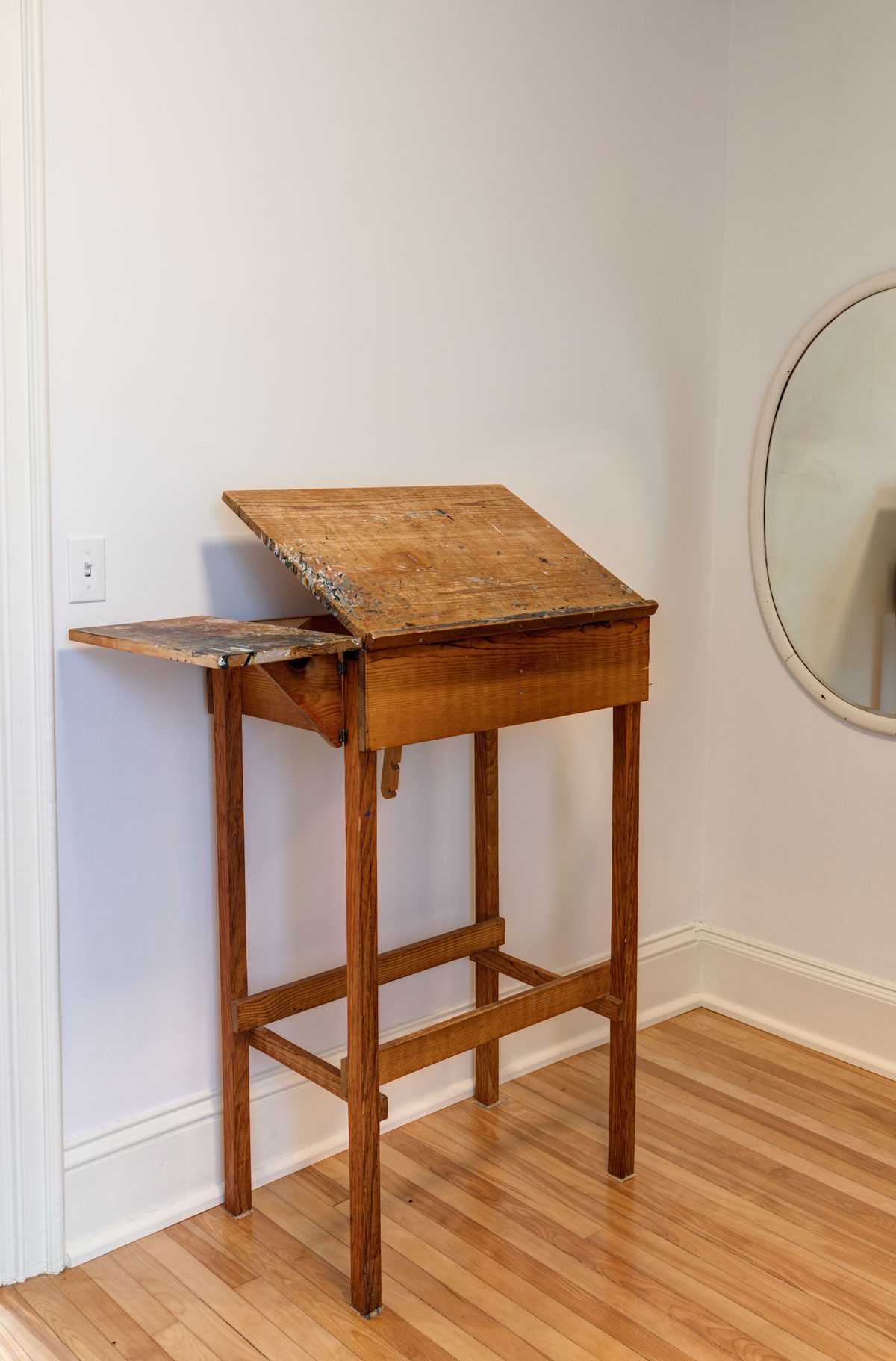 A standing desk that Alex Colville built himself, and used in his studio for decades. Photo: Roger Smith.
A standing desk that Alex Colville built himself, and used in his studio for decades. Photo: Roger Smith.
The university has had Colville House proper in its purview for some time now—the house where Colville lived and works for the early part of his career. But the studio materials were long kept in Wolfville, Nova Scotia, where the Colville family moved in 1973 and where the artist lived up until his death in 2013.
Kelly took “hundreds of photos” documenting the Wolfville studio setup in recent months, right down to “how each jar of paint was on each shelf,” so that the setup could be reproduced as closely as possible in Sackville.
“When we installed the studio [back in Mount Allison’s Colville House this year], we felt that there was something very personal about the experience,” Kelly recounts. “You have all of his art materials, all of the furniture, the lab coat he wore on a little hanger.”
The shelves, easels and desks that Colville custom-made for himself early in his career also have a very personal aura about them.
“He made them to suit his height, to suit his left-handedeness,” says Kelly. “He kept them through a career that lasted over 50 years—including a small, modest chair taken from a dining-room set.”
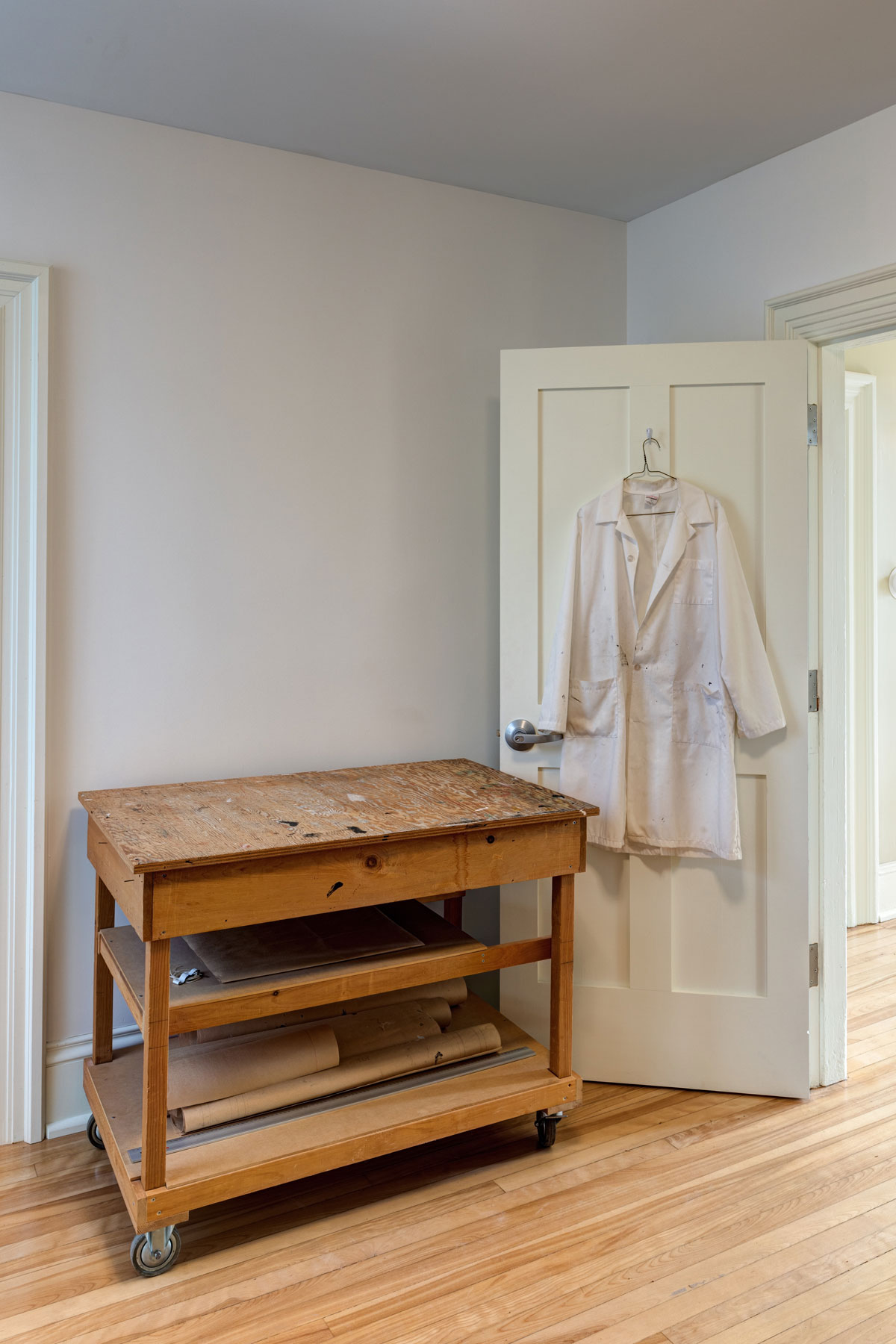 A lab coat Alex Colville wore when working, next to a rolling shelf and table he constructed himself. Photo: Roger Smith.
A lab coat Alex Colville wore when working, next to a rolling shelf and table he constructed himself. Photo: Roger Smith.
Another revelation: Colville House itself may have influenced some of the artist’s most important techniques.
“Colville talked about how renovating the [Sackville] house developed his interest in geometry and measurement, which is a basis of his practice,” says Kelly. “The house itself is an artifact that talks about Colville’s interest in geometry and measurement.”
The Colville studio move and permanent installation was made possible by a federal-government Canada 150 grant of $98,000.
And though the Colville House is usually only open to visitors in July and August of each year, Kelly and her team are working on expanding those hours. And they are also going to use the Colville studio as a resource year-round for Mount Allison students in art, math and more.
Kelly says that in working on this Colville House and studio project, and trying to expand its audience accessibility in coming years, she is inspired by thoughts Turkish author Orhan Pamuk shared during a talk at the 2016 International Council of Museums conference.
In that talk, Pamuk stated, “The future of museums begins at home. The situation is very simple: we are used to having epics but what we need is novels. In museums we are used to representation, but what we need is expression. We are used to having monuments, but what we need is houses.”
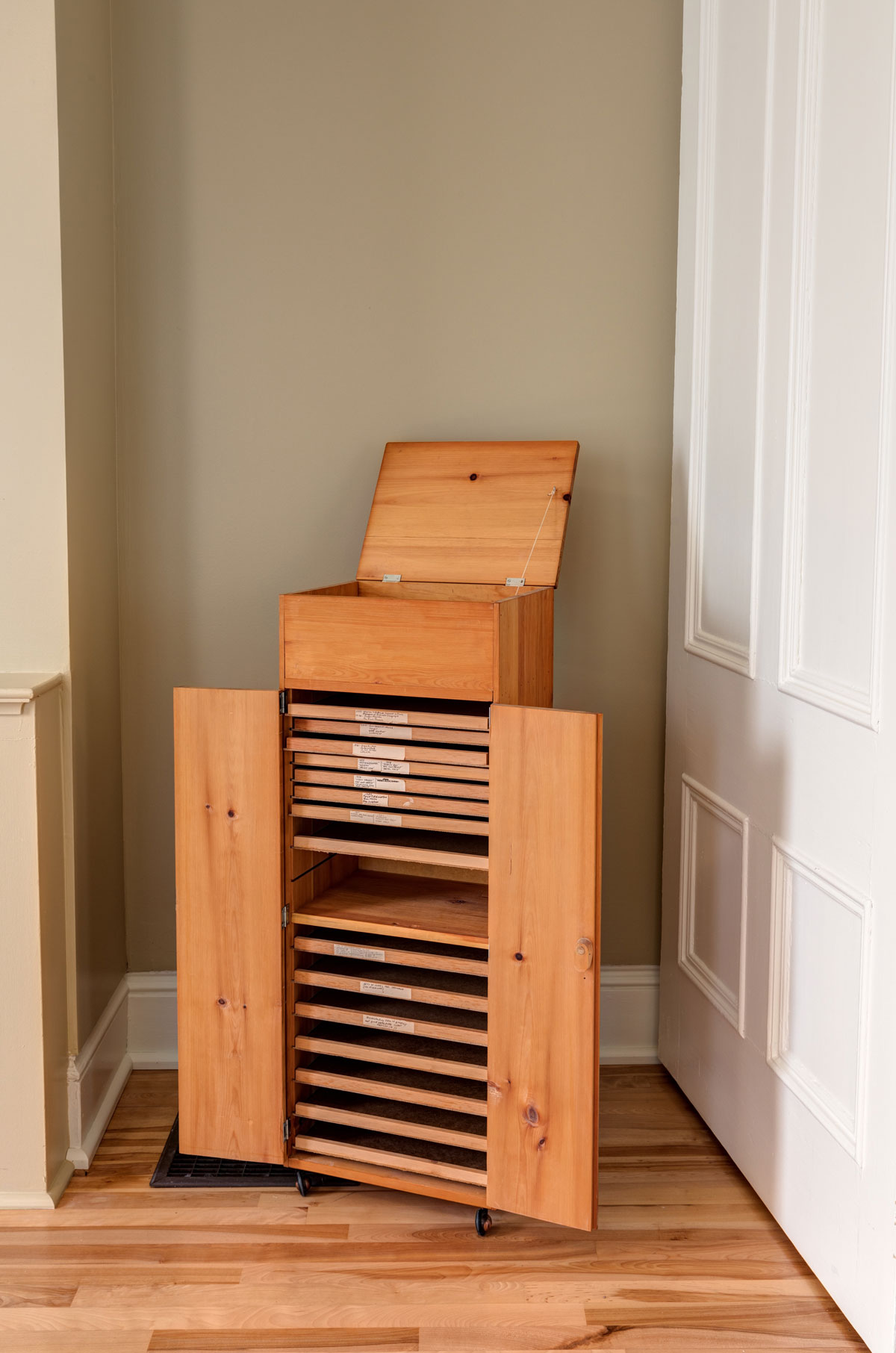 Another item from Alex Colville’s studio soon to go on view at Mount Allison University. Photo: Roger Smith.
Another item from Alex Colville’s studio soon to go on view at Mount Allison University. Photo: Roger Smith.
 An easel (right) and drafting table (by bay window) along with other objects from the studio of Alex Colville. Installation view at the Colville House at Mount Allison University. Photo: Roger Smith.
An easel (right) and drafting table (by bay window) along with other objects from the studio of Alex Colville. Installation view at the Colville House at Mount Allison University. Photo: Roger Smith.
 Books and other ephemera from the studio of Alex Colville, on display at Colville House in Sackville soon. Photo: Roger Smith.
Books and other ephemera from the studio of Alex Colville, on display at Colville House in Sackville soon. Photo: Roger Smith.
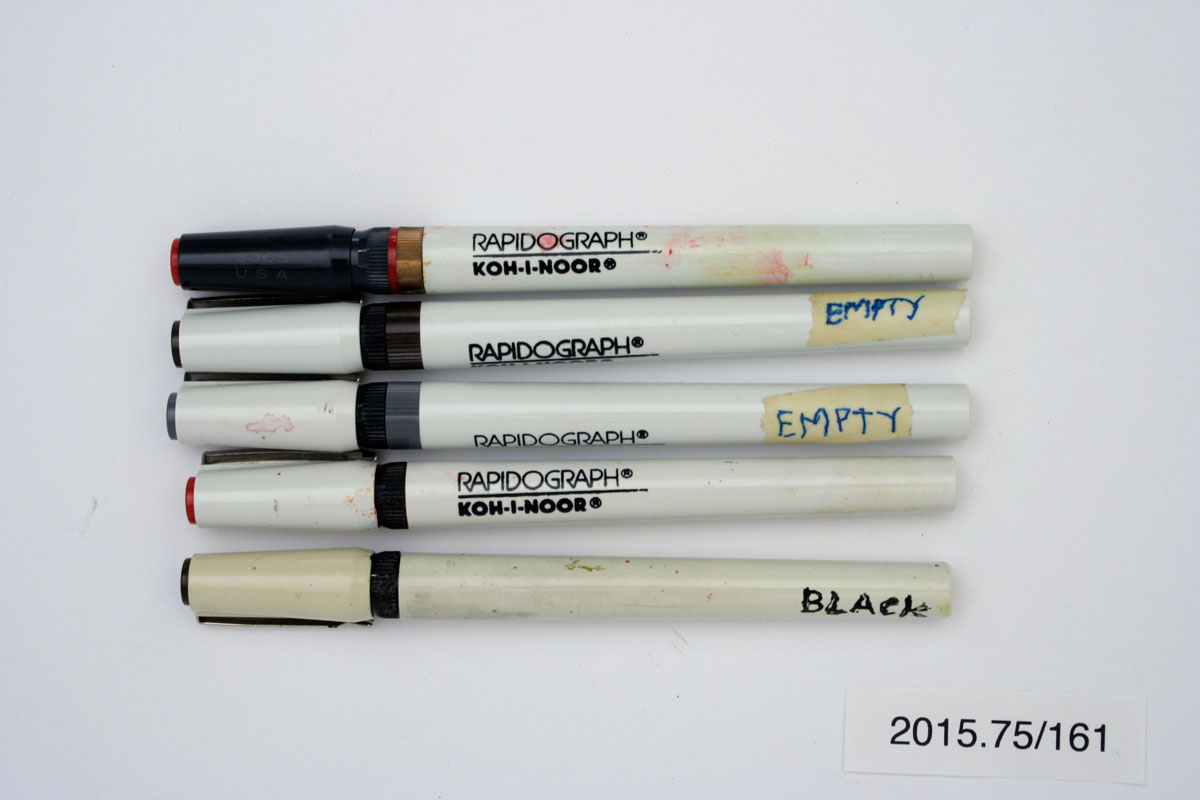 Some of Alex Colville’s Rapidograph pens during the studio cataloguing process. Photo: Roger Smith.
Some of Alex Colville’s Rapidograph pens during the studio cataloguing process. Photo: Roger Smith.
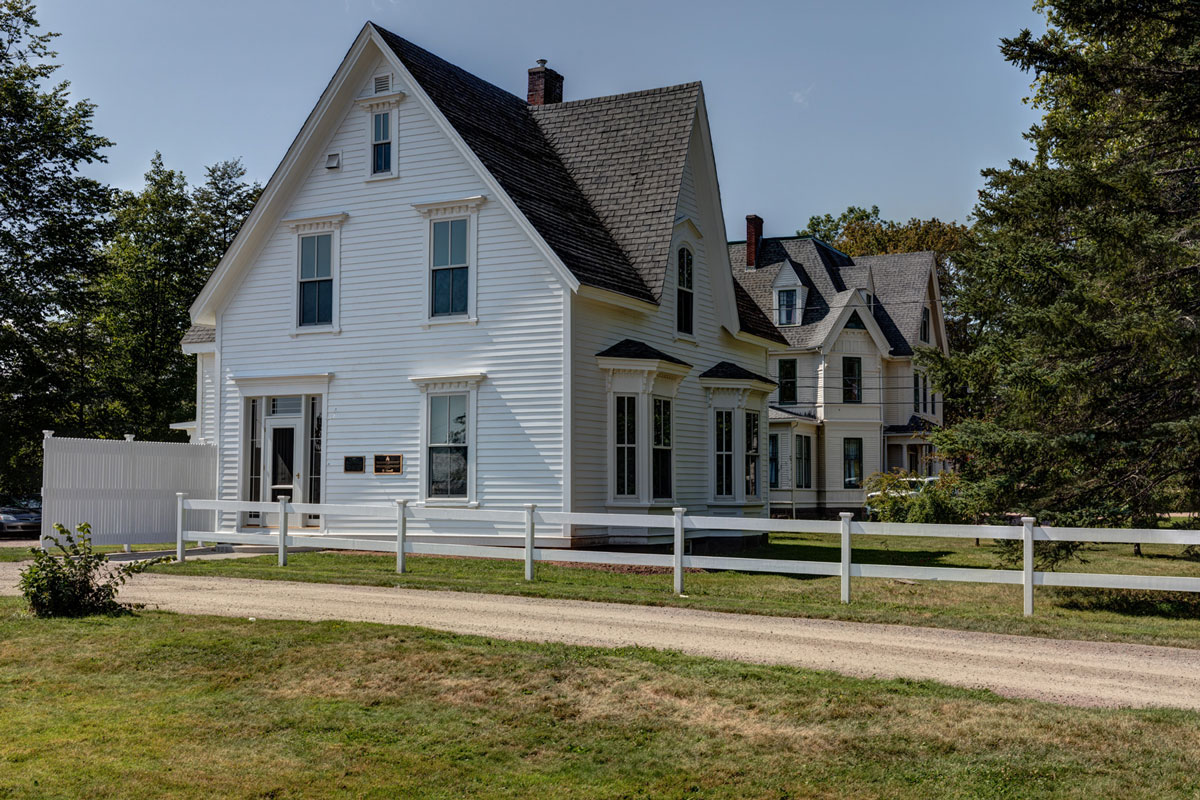 Exterior of the Colville House at Mount Allison University, where artist Alex Colville lived with his family from 1949 to 1973. His studio materials are now housed there as well for public viewing. Photo: Roger Smith.
Exterior of the Colville House at Mount Allison University, where artist Alex Colville lived with his family from 1949 to 1973. His studio materials are now housed there as well for public viewing. Photo: Roger Smith.









